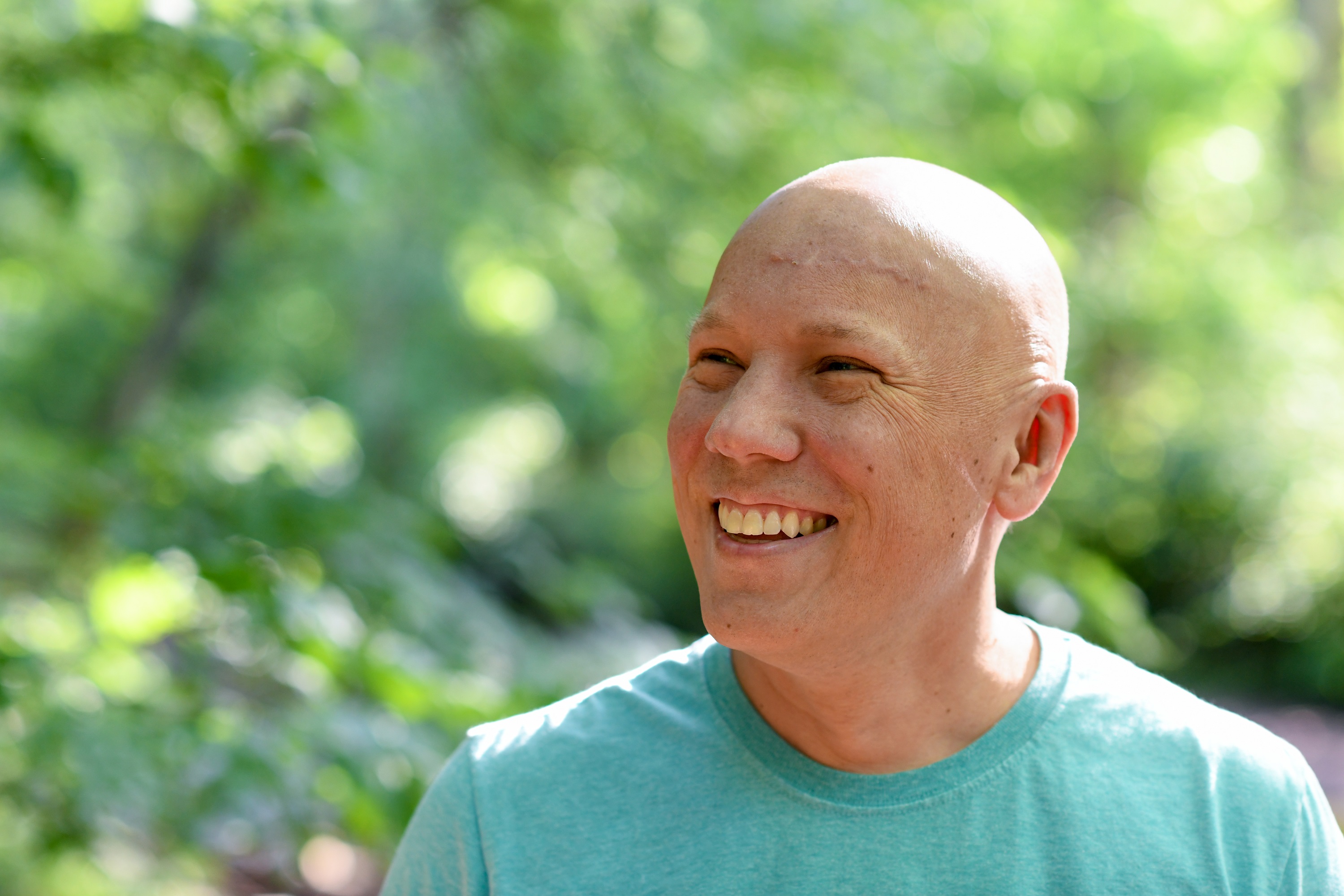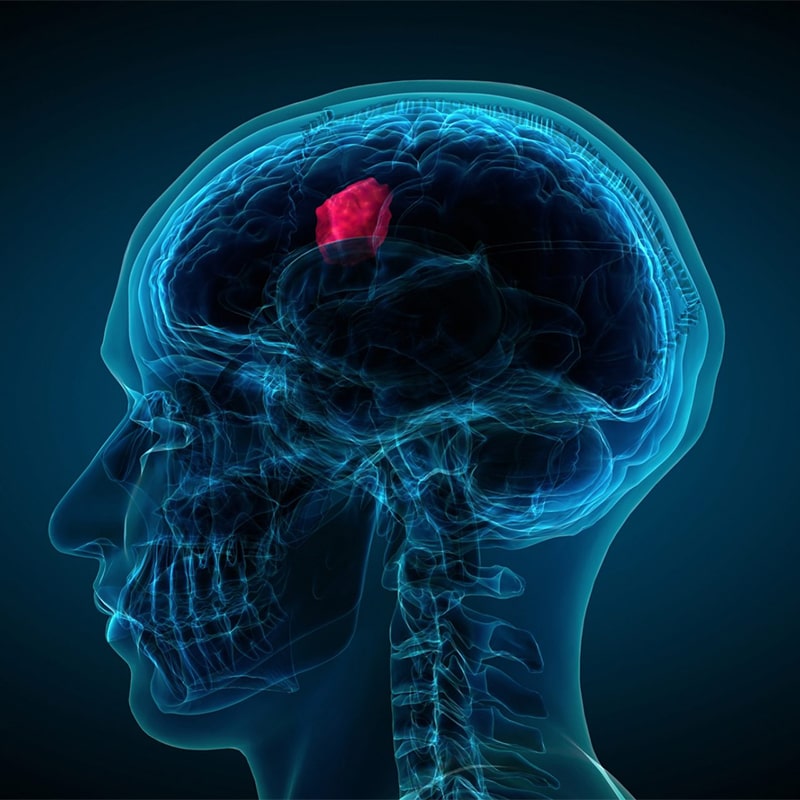Brain Tumor Patient Looks at the Bright Side of Life

June 16, 2022
Forty-five-year-old Daniel Mirdala was cruising on the New Jersey Turnpike with his wife and another couple when he suddenly suffered a seizure. That was when the first stroke of luck happened.
“Normally I drive alone, so it was incredibly lucky that I had a friend in the passenger seat who was able to steer us over onto the shoulder,” Daniel says. An off-duty police officer responded and called 911. An ambulance brought him to JFK University Medical Center.
At the hospital, doctors discovered a mass on Daniel’s brain that turned out to be a grade IV tumor, a fast-growing grade of tumor that is more likely to spread to other parts of the brain. He needed surgery to remove it.
The Plan of Attack
On January 18, 2022, neurosurgeon Thomas Steineke, M.D., surgically removed as much of the tumor as possible.
Daniel had been experiencing a few symptoms of the brain tumor before the car incident, one of which was that his arms and legs had been bothering him. After the surgery, his arms and legs quickly felt better. “My surgeons and nurses did an incredible job, and I was released from the hospital three days after surgery,” he says. “They tested my memory, my arm and leg movements, and I aced all the tests. My body was working better than before the surgery.”
Following the surgery, Daniel was treated with radiation and chemotherapy for six weeks. Now, he is undergoing monthly chemotherapy in the form of a capsule taken at home.
Daniel’s tumor is monitored with MRI scans every two months to see if it is changing. “Follow-up imaging to monitor tumors, particularly when chemo is over, is essential,” says Joseph Landolfi, D.O., chief medical officer and director of neuro-oncology at JFK. “Daniel is doing quite well. He had a normal exam recently. He has the best attitude and is a very positive person.”
A Dose of Positivity
Since starting treatment, Mirdala has returned to his job as a CPA in corporate finance. He works from home and says it can be a challenge in terms of balance. “I don’t want to work more than eight hours a day,” he says. “I want to get off the computer and spend time with my family.”
Daniel takes it all in stride while he counts his blessings—a happy marriage of 22 years and two teenage children. He points back to that day in the car on the turnpike when he could have died, but instead he’s been given new hope and more time.
His advice for others who may be going through something similar? “Don’t focus on the ‘woe is me’ and ‘why me,’” he says. “Focus on the good times that you can still have ahead of you. Appreciate that you’re not the unluckiest person in the world.”
Dr. Landolfi says positive thinking can make a difference. “Some people may give up or become distraught, and quality of life is affected,” he says. “But patients who have a positive attitude and are fighters have higher quality of life and overall do better.”
Next Steps & Resources:
- Meet our source: Joseph Landolfi, D.O.
- To make an appointment with Dr. Landolfi or a neuro-oncologist near you, call 800-822-8905 or visit our website.
- Learn more about treatment for brain and spine cancers
The material provided through HealthU is intended to be used as general information only and should not replace the advice of your physician. Always consult your physician for individual care.
Embracing Hope in the Midst of a Brain Tumor

Brain tumor? Find hope & expert care. Dana's story and Southern Ocean Medical Center's team offer support. Learn more.
Doctors Explain Fluorescent Guided Brain Surgery

Fluorescent Guided Brain Surgery: Drs. Maggio & Kazmi explain this advanced technique for brain tumor removal at Jersey Shore University Medical Center. Learn more & schedule an appointment.

Can Brain Injury Change Your Personality?
Brain injury may alter personality. Learn about common symptoms and available treatments from Dr. Alphonsa Thomas. Call 800-822-8905 for care.

What Are the Early Symptoms of a Brain Tumor?
Early brain tumor symptoms? Learn about headaches, seizures, and other signs from Dr. Daniels. Get the information you need for peace of mind. Find a doctor now.

Manage Living with Chronic Illness
According to the National Health Council, 133 million Americans live with a chronic illness.

Benign vs. Malignant Brain Tumors
The terms benign and malignant are used broadly when identifying tumors. But there's nothing simple about either when they occur in the brain, the most complex organ in the human body. Learn more.
